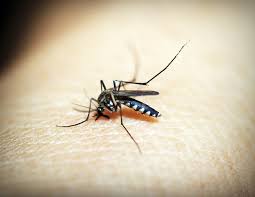The disease burden in India has undergone drastic changes since 1990, with non-communicable diseases or lifestyle diseases emerging on the top. This trend is being seen all over the country and in both urban and rural areas though there are wide variations among states, as shown in the recently released state-wise burden of disease study. The report clearly shows that the contribution of cardiovascular diseases, diabetes, chronic respiratory diseases, mental health and neurological disorders, cancers, musculoskeletal disorders, and chronic kidney disease to the total disease burden has gone up tremendously since 1990. Several earlier research studies have shown how diabetes prevalence is now a pan-Indian phenomenon, and so are cancers and neurological disorders.
The shift from communicable to non-communicable diseases represents the phenomenon of disease transition, which occurs as income levels rise. In fact, India is in the middle of this transition, so there is a double burden. Infectious diseases and neonatal mortality are still a problem in many parts of the country, while diabetes, obesity and heart disease are on the rise even among rural communities and urban poor. While medical research is pointing towards the growing burden of lifestyle diseases, few efforts are being made to look at the underlying reasons for this. The book under review is a bold attempt to fill this gap.
Growing consumption of food high in salt, sugar and fats – known as junk food – and increasing levels of physical inactivity are among the top causes that fuel lifestyle diseases. Addressing such risk factors should be the top priority if we are to stop the tide of diabetes, obesity and related complications. It is here that public policies come into picture. For instance, the book points out, marketing of unhealthy food is largely unregulated. Such food products are aggressively marketed and targeted at children, ignoring the evidence that consumption of such products leads to obesity. Fruits and vegetables help reduce obesity risk, but policies are not in place to make them accessible and affordable. Another essay in the book compared traditional with junk food and ultra-processed food products. A piece penned by diabetes experts – Dr V Mohan and Dr Rajendra Pradeepa, points out that right nutrition and agriculture policies can help India combat obesity and diabetes. Quoting new studies that link dementia with poor diet, the book says that treatment protocols need to be modified to include daily supplements of vital nutrients.
The book has detailed analytical articles on cancer, heart disease, endocrine disorders and underlying causes such as air pollution and tobacco. These articles not only present the current picture about diseases, their risk factors and related policies but also point out gaps in research and data. This way, the book takes the narrative forward from the point where medical scientists stop. If we are to tackle the growing burden of non-communicable diseases – and prevent the tide in future – we will have to address the risk factors including social and environmental determinants. Such a holistic approach is lacking at present, the book is a grim reminder of that. The team at Centre for Science and Environment and DownToEarth deserves kudos for putting together such a crisp and readable book on a complicated subject. (India Science Wire)
-
Lifestyle Diseases: Body Burden
State of India’s Health
Centre for Science and Environment
Price: Rs. 350 Pages: 154.







